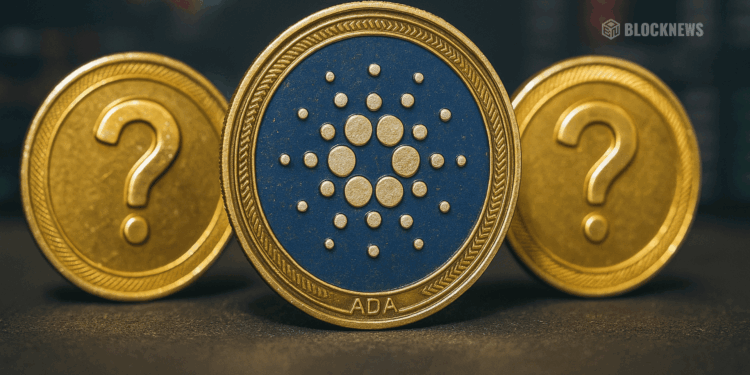- Cardano, Avalanche, and ApeCoin remain 70–98% below ATH despite stronger fundamentals and new catalysts.
- ADA benefits from institutional signals, AVAX from deflationary burns and DeFi growth, APE from metaverse utility.
- If capital rotates into undervalued tokens, these three could reprice faster than the broader market expects.
A large share of the market has already reclaimed or exceeded prior all-time highs. Chasing those winners can work—but the risk/reward often skews late. The more disciplined approach now is to identify projects with solid fundamentals, clear catalysts, and prices still meaningfully below previous peaks.
This framework helps: prioritize tokens with (1) imminent technical upgrades, (2) visible ecosystem growth, (3) institutional signals (ETFs, custody, listings), and (4) clear undervaluation versus last cycle. Three names stand out: Cardano (ADA), Avalanche (AVAX), and ApeCoin (APE).
How to Find “Underpriced Progress”
Look for cases where product, throughput, users, or institutional access have improved since 2021—yet the token remains 70–90% below ATH. Add a check for near-term catalysts (client diversity, scaling releases, governance changes) and whether supply is tightening (staking, burns, treasury deployment, whale accumulation). Those are the setups that typically reprice fastest when momentum returns.
Cardano (ADA): Discounted with Institutional Tailwinds
Cardano’s prior ATH was ~$3.10. Current levels near $0.90–$0.92 leave substantial room, even though the network is stronger than in 2021.
- Execution over promises: smart contracts are live; sidechains are progressing; Hydra scaling continues (headline TPS figures are theoretical, but direction is positive). The community approved ~96M ADA for infrastructure—Project Acropolis (modular node architecture) and consensus improvements—practical investments that support long-term throughput and stability.
- Institutional recognition: ADA consistently appears in regulatory and ETF discussions. Grayscale has trust infrastructure in place; prediction markets currently imply elevated odds for a 2025 ETF outcome. Odds are not outcomes, but the signal is notable.
- Holder base quality: ~1.25M+ active staking wallets and renewed whale accumulation indicate patient capital. Real-world pilots like Atala PRISM for national credentialing add credible, non-speculative utility.
Reclaiming the prior ATH implies ~3x from here. With governance (Voltaire), scaling, and potential ETF access ahead, the upside case is larger—execution remains the key variable.
Avalanche (AVAX): Deflationary Mechanics, DeFi Momentum
AVAX remains ~70% below its 2021 peak, while on-chain activity and token mechanics have improved.
- DeFi resurgence: post-Octane upgrade, TVL and activity rebounded with double-digit QoQ growth. Daily addresses and transactions have accelerated, indicating a durable user base rather than episodic spikes.
- Meaningful burn: Avalanche permanently burns 100% of C-Chain fees. With inscription-style activity (ASC-20s) and higher throughput, the burn rate has become material—protocol-level reduction that scales with usage.
- Technical structure: AVAX broke a multi-month downtrend and advanced ~30% month-over-month. Near-term levels around $35 are in focus, with $50–$80 plausible if momentum and on-chain demand persist.
If you value tokens where rising activity directly pressures circulating supply, AVAX is a straightforward thesis.
ApeCoin (APE): Metaverse Utility, Depressed Pricing
APE trades near $0.63, ~98% below its ~$28 ATH—extreme compression for an ecosystem that has continued shipping.
- Otherside economics: APE functions as the transactional backbone for Yuga Labs’ metaverse initiatives, not merely a ticket.
- ApeChain (L2) and staking: migration to ApeChain with “shadow” staking supports yield on idle NFTs and aims to streamline participation without heavy bridge friction.
- Governance refinement: the proposed ApeCo structure is designed to tighten strategy and execution.
- Liquidity intact: $30M+ daily trading volumes suggest continued market access even during quieter periods.
If metaverse narratives rotate back into focus, APE’s combination of utility and governance cleanup could re-rate quickly from a low base.
Bottom Line
ADA, AVAX, and APE each exhibit a similar profile: stronger fundamentals, identifiable catalysts, and significant discounts to prior highs. If capital rotates beyond early cycle winners, these “underpriced progress” stories often accelerate as the gap between fundamentals and price closes.
Whatever your portfolio size, apply a plan: diversify, respect risk, and favor teams shipping tangible upgrades over pure narrative. In risk-on phases, assets with real utility and improved distribution tend to become leaders—sometimes faster than the market expects.














